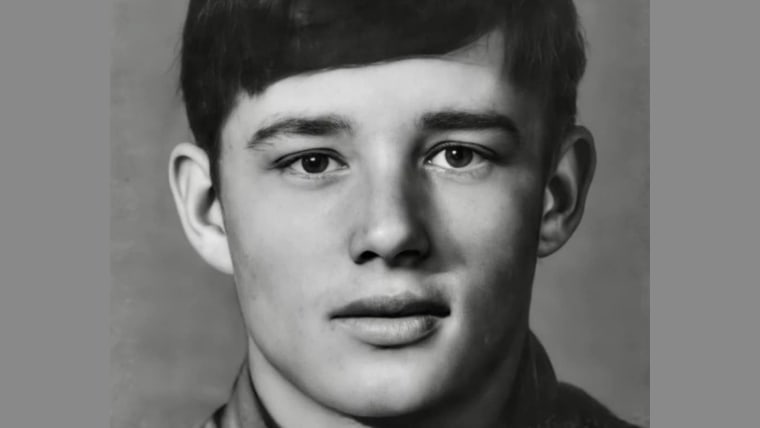In July of 1971, three juveniles in the Englewood area of Coos County, Oregon discovered the body of a young man in Snedden Creek. That young man became known to law enforcement as ‘Frog Boy.’ Finding his real name would take decades and, in the end, solve not just his mystery, but the mystery of a little girl born just a month or so before ‘Frog Boy’ met his fate. The mystery of what happened to that young man and how he died is yet to be solved.
‘FROG BOY’
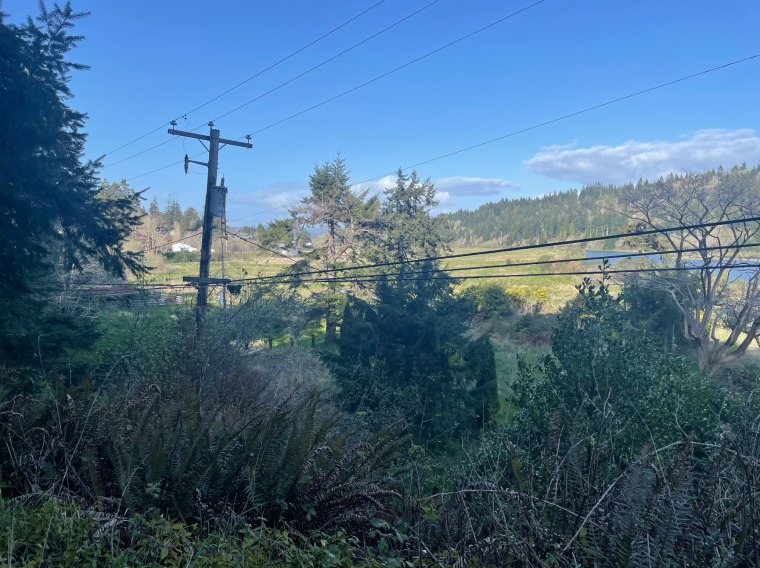
It was July 26, 1971. Coos County, Oregon. “Three juveniles moving horses from one property to another area” found him floating in Snedden Creek, Captain Jason Patterson of the Coos County Sheriff’s Office told Dateline.
Authorities removed the highly decomposed body from the water and determined he was probably a teenager. The young man was wearing a long-sleeve turtleneck sweater. “His pants were found a short distance from him,” the captain noted. “And they are described as blue jeans laced up the sides with leather straps down the legs.”
According to Captain Patterson, the medical examiner “really couldn’t give any cause of death or anything like that because the decomposition had been so bad.” Patterson also told Dateline that based on his memory of the medical report, the time of death was “anywhere from five weeks to, I believe, five months,” prior to the remains being found.
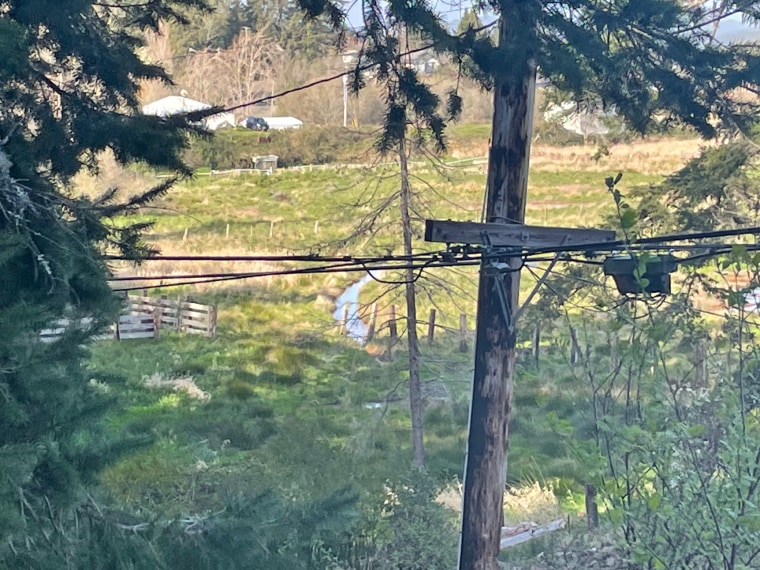
Authorities immediately began trying to identify the teen. “They investigated what they could, they canvassed the area,” the captain said. “Tried to talk to neighbors, tried to figure out who may have been in the area.” But they didn’t find anything that could help identify the young man using technology available at the time. Coos County then paid for a plot to bury the young man. His case went cold.
The now-retired officers who worked the case had given the unidentified teen the nickname ‘Frog Boy,’ because when he was discovered, he “almost looked like a frog in the creek,” Capt. Patterson said. The nickname served a purpose. “It’s something that would stick in their heads,” he explained. “Maybe the next generation of law enforcement people who come through the office will remember that.”
They did remember, but it would take more than one generation of law enforcement officers to give ‘Frog Boy’ back his name. In fact, it would take 50 years. And it would solve another mystery in the process.
AN ADOPTION STORY
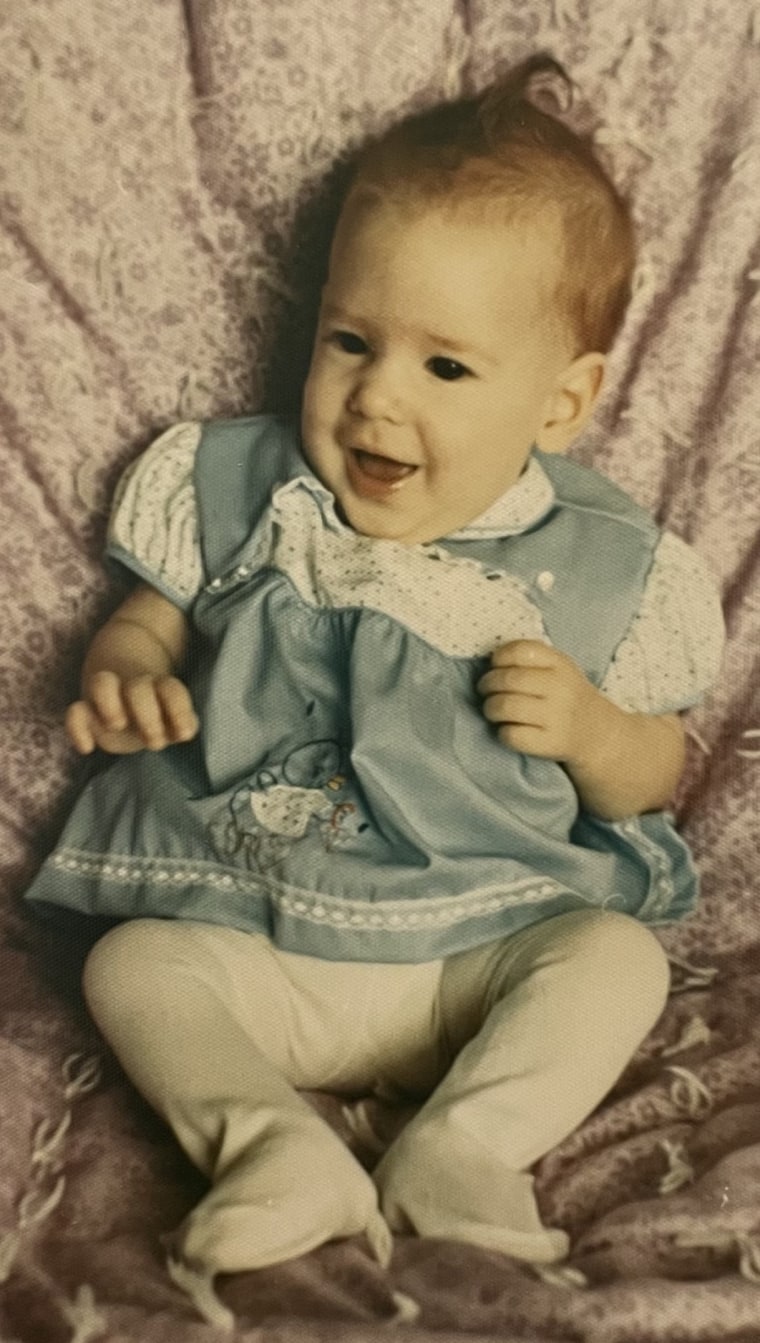
“Even as a little girl I always knew that I had other parents somewhere that weren’t able to take care of me and wanted me to have a better home,” Lori Merriam told Dateline. She had been adopted in June of 1971, when she was just two weeks old, by a loving family that had always been open about the fact that she was adopted.
Despite the love she had for her adoptive family, Lori always felt different. “I always stood out, and I didn’t know where that came from or why I had the likes or dislikes, or why I walked the way I did, or the way I talked, even, was different,” Lori recalled. She also didn’t look like her family. “I’ve got red hair and fair skin. No one in my adoptive family does. So it’s just like I never fully fit in with the family.”
She said she knew at a young age that she wanted to find out who her biological family was and that her adoptive family was supportive of her search. “My dad always encouraged me to look into it,” she said. “I think I was about 12 years old when I really started researching.”
Lori told Dateline she would read books and use the local library’s resources to check the city index. Lori said that by the time she was 15, she had narrowed her search parameters. “I got it narrowed down to about 150 miles radius of Boise, where I was born and raised,” she said. “I had paperwork -- some of my adoption paperwork that described the age of my birth mom, what she looked like, how many siblings she had.”
Lori said with that information her family was able to determine that her biological parents were likely from a rural area. “We had some ideas,” Lori said, of trying to track down her biological mother. “I was close to where she could have been, but we didn’t know.”
In 1987 -- a couple years after she started her search -- tragedy struck. Lori’s adoptive father died in a plane crash. That loss spurred her even further to look for her biological father.
By the summer of 1988, she’d had no luck. “I had worked all summer and saved up money for my senior trip. We were going to go to Europe and go skiing in the Alps and do a whole bunch of other stuff,” Lori told Dateline. But she changed her plans after a family friend who knew of her search connected her with a private investigator who used the alias ‘Mr. X.’ “I decided to take that money and hire ‘Mr. X’ to see if he could find my birth family,” Lori said.
Within 24 hours of contacting the private investigator, Lori said she had the names of many people on her maternal line, including her biological mother. “I was not expecting it to be that quick,” Lori said. “I was thinking a week or two, maybe a month.”
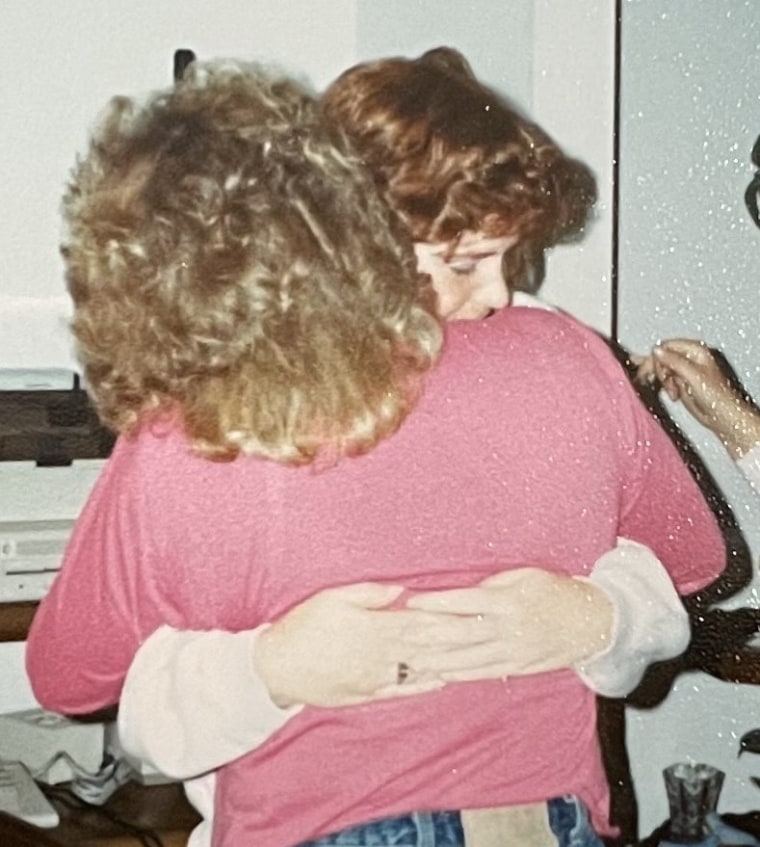
She reached out to her biological mother and they made a plan to meet later that week. “When we first met, we hugged, and it was just, like, instant connection,” Lori told Dateline. “That was a puzzle piece that was missing and just filled my heart. I can’t even describe the connection.”
Lori learned more about her mother’s story. She was only 15 years old when she was pregnant with Lori and was sent to Booth Maternity Home in Boise, which provided care for young unwed mothers. Lori’s mother gave birth there and was sent home. “She didn’t want to give me up for adoption,” Lori said. “She wanted to keep me, but that just was not in the cards at the time.” Lori also told Dateline that there was no father’s name listed on her birth certificate.
After reconnecting with some of her biological family, Lori spent the following Christmas with them. And that’s when she received a gift she would treasure. “One of my Christmas presents was a picture of my birth dad,” she said. Along with giving her the photo, Lori said that her mother told her that her father’s name: Winston “Wint” Arthur Maxey III.

She also learned something else about her father: No one knew where he was.
After finding her mother, Lori was more determined than ever to find her father. “I really wanted to find my birth dad and just see, ‘Do I have siblings? What’s he like? What kind of life did he get to live?’ And all that good stuff,” she said.
Eventually, Lori connected with some of the family members on her paternal line. She said that over the years she had been told plenty of stories about what happened to her father: That he ran away, joined the circus, joined the rodeo.
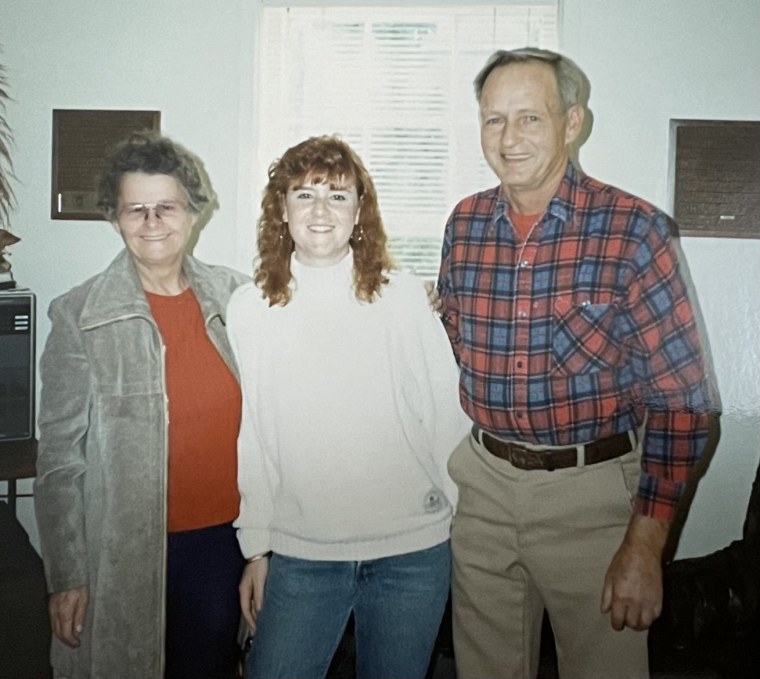
But, ultimately, “The stories always changed,” Lori said.
Dateline spoke with one of Wint’s sisters, Marla Poindexter. “We grew up in a little town and we moved a lot — we moved a lot when I was growing up,” Marla said. Wint was one of eight children -- four boys and four girls.
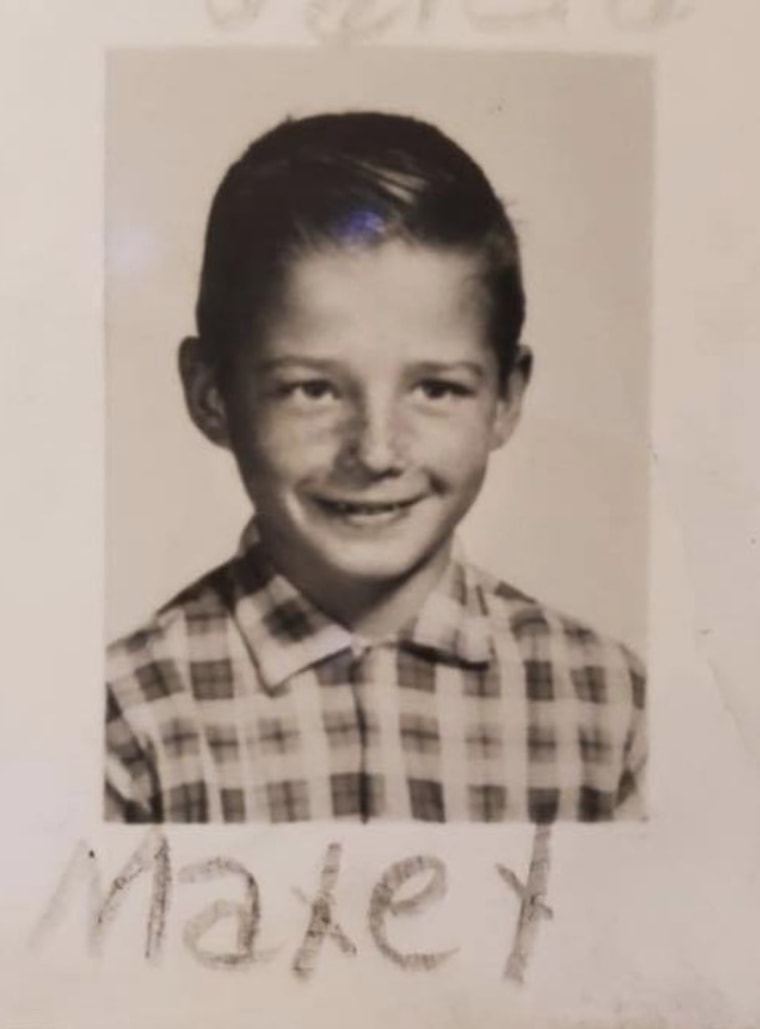
“He wanted to dance to his own tune,” Marla said. “I mean, he was a good brother for the most part.”
However, Marla said, Wint did not really get along with their parents. “He fought my parents every inch of the way,” she remembered. “Didn’t like rules, didn’t like what they had going for him.”
She said her older brother often got mixed up with the wrong crowd. He also had been known to run away from home. Once, Marla said, Wint and a friend ran away to Oregon together. “My parents made him come back,” Marla told Dateline. “He did end up coming home.”
But not for long.
Marla told Dateline that in 1971, her parents were considering sending 16-year-old Wint away for a while. “My parents tried to get him out,” she said, adding that the plan was to send him to a ranch to do some work. “He said he didn’t want to. That’s when he took off and ran away again.”
She remembered Wint stopped by her school to say goodbye. “He came and said he was leaving and said goodbye to me,” Marla said. “And that was it. He was gone.”
Marla, who was only 12 or 13 at the time, told Dateline that she figured Wint would come home eventually. “He’d ran away before and came back,” she said.
But this time, Wint didn’t come back.
According to Marla, Wint had visited one of their sisters in Boise before heading out to Oregon. “I guess that’s where he left from,” she said.
When asked if she thought it was odd that Wint never got in touch with their family again, Marla said yes. But no one in Wint’s family ever reported him missing. “My mom and dad, they more or less just said, ‘He went out on his own, that was what he chose to do,’” Marla told Dateline. “And, you know, ‘There’s nothing we can do.’”
“‘Cause they brought him back a couple of times when he ran away, and he ran away again,” Marla said. “And so the last time he ran away, they just didn’t bother.”
In a small town there were bound to be rumors about Wint leaving. Marla told Dateline she heard some talk about how her brother had gotten himself into some trouble before he left, but she wasn’t sure what was true or not.
She said that as she got older, she often wondered what became of her brother. She said that whenever she was out and about, if someone kept looking at her or something, she would always think, “Maybe that’s my brother. Maybe he knows me.”
Marla held out hope that Wint would turn up someday. “I always kept thinking, ‘Maybe he’ll turn up,’” Marla said. “But he never did.”
She told Dateline that she did try to track her brother down a couple of times. She considered the fact that maybe he changed his name. “I always thought, ‘Well, maybe he just changed his name because he didn’t want to be found,’” she said.
Marla told Dateline that, as an adult, she reached out to a Social Security Office to see if she could get any information on Wint. “They couldn’t give me his social security number,” she said. But she said they did tell her that she could write a letter and they’d send it to the address on file. “And if he wanted to get back in touch with me, he would write me,” Marla said. “If not, then that was that.”
So Marla wrote a letter to her long lost brother. “I wrote the letter and took it to Social Security,” Marla said. “He never did get back in touch with me.”
At the end of the day, Marla felt that there was not much else she could do to find her brother. “I mean, I would like to know what truly happened,” she said. “I would be curious to know what actually happened.”
And then, along came Lori Merriam, the young woman searching for her biological father.
When she was in her 20s, Lori began putting ads in local newspapers in the Oregon cities of Bend and Portland, seeking information about her father. Nothing came from the ad placements. Like Marla Poindexter, Lori also considered that maybe the reason she couldn’t find any information about her father was because he had changed his name or how he looked to hide his identity.
Her investigation went cold.
It would take modern technology, a lot of help and a little bit of luck to uncover the buried secret that would solve Lori’s mystery and, as it turned out, another mystery, as well.
PARALLEL LINES
In 2016, Lori Merriam submitted her DNA to Ancestry.com hoping for a connection. No matches.
She also turned to social media and started the Facebook page “Where in the World is Winston Maxey,” in which she asked for help finding the father she never met. Lori also reached out to a Facebook page called “Idaho Cold Cases.” The owner of the page shared Lori’s story to their thousands of followers.
That same year, Lori tried to report her father missing, but told Dateline that she faced difficulties, as he was not listed on her birth certificate.
“This is a hard thing, because I didn’t know where he went missing,” Lori said. “I had to call each police group and tell them my story and say, ‘I’m looking for my dad.’”
Lori said that the departments took the information but weren’t able to do much.
She said she tried to get Wint added to the National Center for Missing and Exploited Children (NCMEC) and National Missing and Unidentified Persons System (NamUs) databases, but was not successful. Dateline spoke with a representative from NCMEC, who explained that they were unable to add Wint to their database because there was no official missing person report on file with a law enforcement agency.
Lori was frustrated and felt like she had hit a dead end. However, officials investigating a long-ago John Doe case in Oregon would soon blow Lori’s case wide open.
‘FROG BOY’ NO MORE
Captain Jason Patterson of the Coos County Sheriff’s Office told Dateline that as new technology for identification was being developed, their office started “looking with our medical examiner about ways to identify people again.” One of the identifications they wanted to make was ‘Frog Boy,’ the teenager whose body had been found in Snedden Creek in 1971. Using a grant from the Oregon State Medical Examiner’s Office, the department “made arrangements to have him exhumed,” Patterson said, and “basically retrieved some bone fragments and sent them off for a DNA profile.” According to a press release, the “DNA was registered through the NAMUS database and analyzed by Parabon NanoLabs.”
In January of 2021, the ‘Frog Boy’ John Doe case came across CeCe Moore’s desk. Moore is the chief genetic genealogist at Parabon, a company dedicated to fully leveraging the power of DNA. Moore explained to Dateline that Parabon has a long-standing contract with the Coos County Sheriff’s Office to help them identify John and Jane Does.
According to Moore, the ‘Frog Boy’ case was one of the most notable she has worked on. “It was very difficult on the genetic genealogy side of it,” she said. “Typically, I can come up with a strong hypothesis for someone’s identity on these Oregon cases in a weekend, a couple of days.” But this case was different and would take her three months.
In the end, Moore was able to narrow down her search and identify one family to whom she believed ‘Frog Boy’ belonged. It was a family with four sons. “All of the other brothers, I found proof of life after 1971, which is when the unidentified remains were found,” Moore said. “Except for him.” Then, she said, “I had a name.”
It was Winston “Wint” Arthur Maxey III.
THE DAUGHTER HE NEVER KNEW
CeCe Moore told Dateline that once she had Wint’s name, she spent some time Googling to see if anyone had posted about him being missing. That’s when she came upon the 'Idaho Cold Cases' Facebook page that posted about a missing teen from 1971 by the name of Winston “Wint” Arthur Maxey III. Moore said she noticed one woman was extremely vocal in the comments and followed the link to the woman’s page. “I found Lori’s Facebook page,” she said. “And that was shocking.”
From there, Moore had a daunting task. She had to break the good news and the bad news to Lori: They had identified her father, but he was no longer alive. “I really understood the sensitivity that this was going to require and need -- and that it would be heartbreaking for her,” Moore told Dateline.
In August of 2021, Lori Merriam received a single message from a woman she’d never met that would change the course of her own investigation. It was CeCe Moore, who shared that she had reason to believe that the Coos County, Oregon John Doe known as ‘Frog Boy’ was Lori’s birth father. “We definitely spent some in-depth time on the phone that first time, talking through everything,” Moore recalled. “Her feelings about it and what this meant and how to move forward.”
Even though Lori had submitted her DNA to Ancestry.com, Moore explained, “those companies don’t allow law enforcement to compare against them.” So, in order to officially confirm a match Moore asked Lori to download her raw data from Ancestry.com and upload it to GEDmatch. “Long story short, we did an upload to GEDmatch with my DNA, and it was actually a hit,” Lori told Dateline. “That John Doe who’d been missing for 50 years actually was my dad.”
“I was devastated,” Lori told Dateline. “My mind was just completely numb at that point.”
CeCe Moore had correctly anticipated Lori’s reaction to the news. “He didn’t even get to live his life, and here I am living mine,” Lori said. “Man, it crushed me.”
CeCe Moore told Dateline that her company also reached out to one of Winston’s sisters to submit her DNA, since they needed a “legal relative” for official confirmation. She complied and was a match.
‘Frog Boy’ was Winston “Wint” Arthur Maxey III.
And Wint was Lori Merriam’s birth father.
“It’s amazing,” Captain James Peterson of the Coos County Sheriff’s Office told Dateline about Wint’s identification in 2021. “Especially when you have a John Doe case, or a case that’s been sitting around for 50 years. It’s one of those things you just want to give them even though you’re not giving that person back.”
But there is still one mystery to be solved.
WHAT HAPPENED TO WINSTON “WINT” ARTHUR MAXEY III?
Lori told Dateline that she believes her father was murdered. And in August of 2022, she changed the name of her Facebook page to ‘Who in the World Murdered Winston Maxey?’ She is hoping that someone comes forward who has answers about his final days that summer of 1971.
Lori wonders why her father’s family never reported Wint missing. Captain Patterson explained that in 1971, “there wasn’t a missing person database yet, so it’s hard to say” what went on. The lack of a missing report had also stood out to him. “I have my thoughts,” he said. “I don’t know why the family wouldn’t report their son or daughter missing.”
Today, after five decades, Wint is finally resting with the daughter he never knew. “Because they could prove it through DNA, I was the only person that authorities thought would be the best person to have his remains,” Lori said.
Since learning her father’s fate, Lori has set up the “Winston Arthur Maxey Foundation.” She says the main focus of the group is to help other Oregon families whose loved ones are missing. “We just advocate and educate,” she told Dateline. “We advocate for families if they don’t know what to do, we guide them on their first steps, and we’re there to help support them emotionally and give them resources.” Lori added that because of the complications she faced having been adopted, the foundation also helps those in situations similar to hers.
“The best thing that I would say that I’ve taken away from this is just to keep going, keep researching, keep pushing forward,” she said. “Don’t stop. It took 50 years for me to find my dad. And it’s always possible you may not have the outcome that you would like, but there’s always an ending, right?”
“It really shows what kind of person she is,” CeCe Moore said of the way Lori has channeled her energy into the foundation. “She wanted to use this experience to be able to help make positive change and perhaps fund more of these types of cases and help more people get the answers that they’re waiting for.”

For now, Lori is holding on to the hope that she will one day find the one answer she is still looking for: What happened to Winston “Wint” Arthur Maxey? And if it is determined he was murdered, she wants justice.
Captain Patterson confirmed to Dateline that the investigation into Wint’s death is still open and active. He noted that authorities do have other important information regarding the case. “But those are things that I have to hold back for investigative reasons,” he said.
He hopes that anyone who was in the Coos County, Oregon area in June or July of 1971 who may have seen a teenager who looked like Winston walking or getting into a vehicle comes forward. Lori Merriam noted that her father may have dyed his red hair to be a darker brown before he died.
If you have information, please contact Captain Patterson at (541)-396-7820 or call the Coos County Sheriff’s Office at (541) 396-7800.
